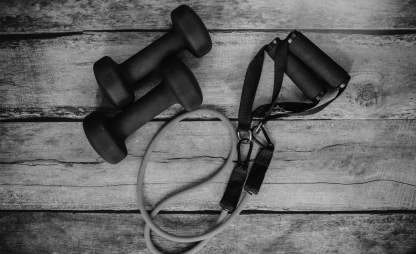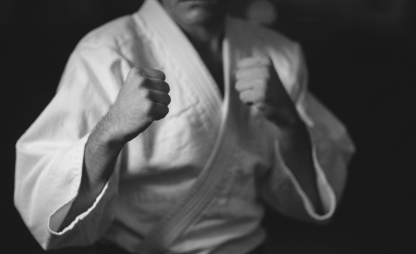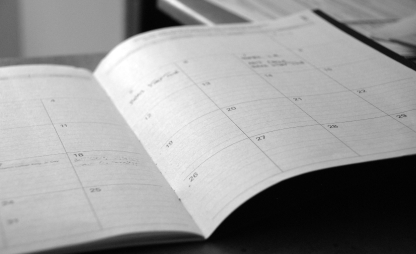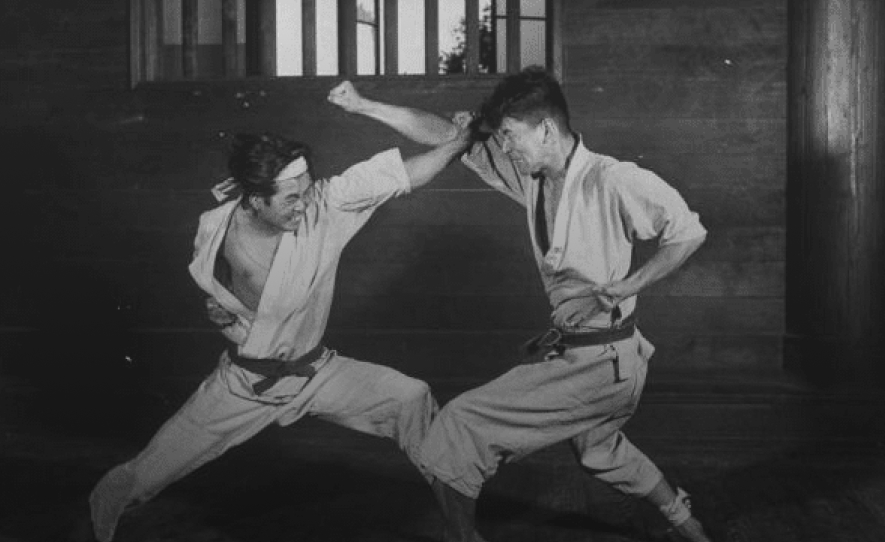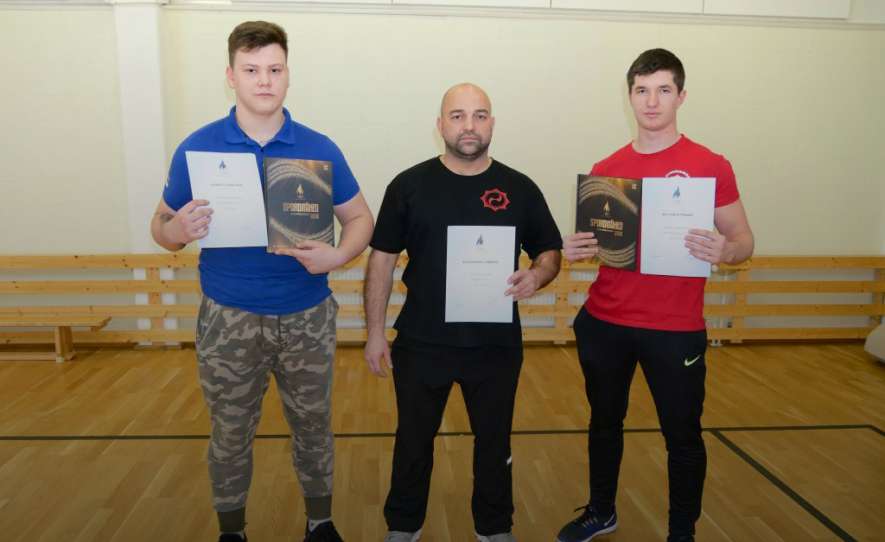• Blog • Blog • Blog • Blog
PECULIARITIES OF ORGANIZATION OF TRAINING PROCESS OF CHILDREN 5-6 YEARS OLD

The readers’ attention is invited to the author’s material of the famous karateka Alexandra Nechai (Kishkina) – Master of Sports of Russia, Master of Sports International Class, World Champion in Wado-kai and multiple medalist of Russian and international competitions.
Now Alexandra leads a successful coaching activity, and in this material she shares her knowledge and experience on how to properly organize training of children 5-6 years old.
Today it is obvious that many sports are significantly “younger”. And karate-do in the key of this trend is not an exception: if 15 years ago, 8-year-old karate fighters could not be found in every section, today you can see a six-year-old fighter on the tatami. This process is predictable, expected and has quite natural objective reasons. First of all, it is the increasingly widespread desire for a healthy lifestyle. In addition, the extremely high level of child morbidity and computerization of the younger generation makes parents think about improving the physical health of their children, which is impossible without adequate physical activity. The number of kids with hyperactivity syndrome is also growing exponentially. Many parents are ready to give a three-year-old child to a sports section. All these circumstances have caused an influx of preschool children into sports sections.
In my opinion, this is a positive trend: the coach gets a wider choice of talented children, and the task of educating a healthy generation becomes more real. At the same time, a coach working with preschoolers faces a difficult task: to learn how to work with young children, to be able to instill in them a love for sports and work on themselves, to be able to maintain it for many years and to raise adult athletes from “yokels”.
Many coaches have difficulties in working with kids. The main ones are disobedience and, as a consequence, a low level of mastering the skills of martial arts. Usually, at the initial training stage, this age group resembles a visual model of Brownian motion. Performing a simple exercise with the whole group at the same time sometimes seems impossible, not counting the endlessly aching heads, bellies, and just a bad mood, because “I can’t do anything” or “I broke a plate yesterday at the kindergarten, and the teacher scolded me”. Often, the well-established system of work with older children practically does not work here. Thus, there is an urgent need to correct, it would seem, already established system of training, the development of new forms and methods adapted to work with preschoolers. In the first weeks of work with children of 5-6 years old it becomes obvious that this is another, alien civilization, and to be able to train it, it is necessary to learn to understand it.
At the heart of physical education is the main principle: physical activity should bring joy. And it is especially important in tender childhood. Therefore, its nature and volume should correspond to the age-related psychological and physiological characteristics of children, as well as the peculiarities of modern education.
Why, in fact, we are talking about five-six-year-old children, and what about younger children?
Recruit children under 5 years old (especially in “mixed” mixed-age groups) by and large makes no sense. Sufficient physical activity for three or four-year-olds is simple and uncomplicated. Younger preschoolers both physically and psychologically are not ready for special activities. At this age, children are just beginning to perceive themselves as a separate person, not as a construct “me and mom”, learn to recognize their own and others’ boundaries, communicate with peers and adults, understand their emotions and emotions of others. At this age there is often a reaction of denial of everything and anything. In this case, the negative reaction is not to the action as such, but to the very fact of a demand or request from an adult. Physical abilities are also not great yet: many children are just learning to jump, play with a ball, stand on one leg, do not distinguish between right and left, can not focus attention on the case performed for more than 5 minutes. For proper physical development at this age is enough home gym corner and fun active pastime.
Children of five-six years of age are quite adequately able to learn not only exercises of general physical training, but also successfully learn special karate techniques. That is why it is worth considering 5-6 years as the first age stage for the beginning of karate training.
First of all, the coach, starting to work with young children, must have a lot of patience, be prepared for many surprises and constant contact with parents.
But we will deal with everything in order….
Sports selection
Karate-do belongs to those happy sports, for which there are practically no any special selection criteria. However, taking young pupils into the section, you should pay attention to some points.
The first thing that the coach should do is to send the newly minted students to the clinic for a certificate of health. Do not underestimate the importance of this seemingly prosaic formality. As my experience shows, some parents do not even realize that their own children have pathologies, primarily of the cardiovascular and musculoskeletal systems. Some of them turn out to be direct contraindications to martial arts, some of them are not contraindications, but require correction and individual dosing of training load. I think it is obvious to continue systematic control of the health condition of students. Sports medicine recommends to undergo medical examination 2 times a year.
In the process of training may reveal individual characteristics of children that are not a medical contraindication, but require special attention: hyperactivity syndrome, delays in physical and mental development, etc. In this case it is especially important to communicate closely with the parents of the child. Often, parents of children with special needs are not ready to admit it in front of the coach. However, it is necessary to make a joint decision. Most parents of hyperactive children bring them to the sports section, so that the child finally “ran out”. However, in some types of hyperactivity classes in the karate section aggravate the already difficult condition of the child. Usually, such kids are not able to engage in more than 3-5 minutes of orderly activity, and tired to perform exercises begin to actively distract other members of the group. In this case, any attempts of the coach to stop the chaotic behavior of the child leads to its strengthening and outbursts of aggression. Such peculiarity of the kid’s psyche requires individual special correctional work, one of the most important conditions of which is strict observance of the daily regime and specific dosage of physical and mental load. The coach does not have the opportunity to provide such corrective work in the conditions of group training.
With regard to mental retardation, if the child’s behavior does not pose a threat to his own life and the lives of other students, he can engage in the karate section, but the main task in this case will be socialization rather than achieving high sports results.
Physical development
5-6 years – the age of active development of physical and cognitive abilities of the child. Children begin to realize the breadth of their own physical capabilities, strive to develop agility, flexibility, speed, strength, endurance, well tolerate the load, quickly recover. At this age, coordination of movements improves significantly, children are able to quickly internalize the essence and features of the learned exercises and independently reproduce the ideal image of movement. By the age of 6, children are able to master quite complex specialized movements: kihon and kata techniques, the basics of kumite elements.
So, let’s define the main principles of the training process of children of 5-6 years old, taking into account the peculiarities of physical development:
1. The main principle: loads of average size give a greater increase in fitness. For children, the load should not be associated with high and very high tension;
2. the main task of physical training of children at the age of 5-6 years: to maximize the set of mastered simple and prepare for the mastering of new technically complex exercises. Proceeding from this, it is useful to use the splitting of complex technical movements into simple leading exercises (for example, preparation for correct movement in the zenkutsu-dachi stance can be turned into a set of leading exercises: a) lunges forward, b) exercise “skier” (imitate walking on skis, but the distance between the legs is equal to shoulder width), c) walking with half-bent knees, d) jumping forward with change of legs on pre-placed markers (markers are laid out in a zigzag pattern), etc.). д.;
3. Overcoming extreme or close to them resistance is contraindicated (for example, lifting heavy weights or performing exercises with weights);
4. When choosing the sequence of exercises, it is preferable to perform speed-oriented exercises and “boring” exercises that require concentration after warming up, while strength-oriented exercises should be moved to the second half of the training. Training should not be exclusively narrowly focused. At this age it is necessary to develop motor skills in a versatile way, which is necessary for further harmonious physical development of a young athlete;
5. Jogging in the warm-up should not exceed 5-7 minutes;
6. The performance of basic exercises should be interspersed with rest pauses. Simple breathing exercises and finger games for dexterity are good here;
7. The training plan should include game elements: relay races, various sports games. Be sure to let them play and at the end of the training;
8. Training for strength and endurance at this age should have a multidirectional, diverse nature. It is not necessary to limit, for example, only to running to develop endurance;
9. It is obligatory to monitor the functional state of young athletes. The simplest and, most importantly, the most accessible way is to control the heart rate (HR), or, simply put, to measure the pulse. Since children can not correctly calculate their own heart rate, at each training session we choose 2-3 children who will have their heart rate measured 2-3 times during the training session. The measurement is carried out within 10 seconds immediately after the load and 2-3 minutes after the load. We compare the number of beats with the HR power zone scale (I zone: 20-24 yd/10 sec, II zone: 25-26 yd/10 sec, III zone: 27-28 yd/10 sec, IV zone: 29 and above yd/10 sec). I and II zones correspond to the optimal comfortable load for the heart. Zone III is characterized by the maximum development of the respiratory system, the level of maximum oxygen consumption of the lungs increases. Reaching the IV zone is a negative indicator, indicating an excessive load for this pupil. When measuring the pulse 2-3 minutes after the load, the HR should ideally decrease to the level of zone I. This indicates a normal recovery process.
We evaluate the HR immediately after the load: if it systematically falls into the IV zone, then it is necessary to reduce the load for individual children or for the group as a whole; falling into the II and III zones is normal and indicates the effective development of training; HR, corresponding to the I zone is characteristic of the cardiovascular system with high endurance; HR, below 20 beats/10 sec – a reason to be alarmed. This may be an indication of heart rhythm disturbance and development of bradycardia. Such a pupil should be sent for additional examination to a cardiologist.
Many coaches have probably encountered headaches that occur in children during training. The main cause of this phenomenon is carbohydrate deficiency. Often accompanying it are dark circles under the eyes and a pale nasolabial triangle. Most often it occurs when the child came to training hungry. In this case, you need to treat the sufferer with a candy or a piece of chocolate and give the opportunity to rest until the headache stops. Advice to parents: provide a light carbohydrate snack (bread, sandwiches) at least 40 minutes before training. Of course, every headache attack should be reported to the parents.
Also an indicator of physical condition is breathing: breathing through the mouth when doing exercises indicates that the power of the load has been exceeded.
Taking into account the physical features of development is certainly an important point, however, to correctly build a training process is not possible without understanding the psychological characteristics of 5-6 year old children.
Psychological peculiarities
Children at this age have a good learning ability. This is a consequence of improving the stability of memory and attention. The latter becomes more arbitrary, i.e. the child can activate, direct and hold it by the effort of his own will. Children 5-6 years old are able to act on the adult’s assignment, are ready to accept a simple system of rules, and can engage in not very attractive, but necessary business for 20-25 minutes. They are extremely inquisitive, ask a lot of questions, and try to find their own answers, reason, build inferences, strive to show independence in everything, can foresee the near and distant consequences of their own actions. There is a great desire to show themselves to the world, and at the same time to try it for strength and find out “how it all around works”. At this age, the mechanisms of self-regulation, children’s awareness of the general rules of behavior and the obligation to follow them begin to form. However, it should be understood that at this age the processes of excitation still prevail over the processes of inhibition and the child has not yet fully mastered the means of self-control. That is why children are easily distracted – it is worthwhile for the coach, for example, to leave the hall for a few seconds or to deepen into work with one of the students. When they get tired of acting on the task, they start talking or doing what they want to do at the moment. It is still difficult for children to focus their attention on what they find uninteresting.
The most important features of the psyche of children 5-6 years old, which the coach must take into account and in accordance with which to build training and educational process, the following:
The main way of cognition and the leading activity at this age is a story-role-playing game. At the same time, there is a gradual transition to games with rules;
The leading need is the need for communication and creative activity;
Lack of abstract thinking. At this age, visual and figurative thinking is actively beginning to form (it involves visual representation of a situation and operating with images of its constituent objects without performing real practical actions with them). However, many children continue to resort to visual-action thinking (solving problems through practical activity, the need for a visual example) when it is difficult for them to understand the task set before them.
Let us further emphasize the principles of the training process taking into account the psychological development of children of 5-6 years old:
1. Physical activity should be a pleasure. This is a very important point, because young children are not able to understand why they should do something, exerting themselves. Do not limit yourself in creativity, try to diversify the training with fun exercises. Routine exercises, such as learning special karate techniques (that is, exercises that require high concentration and discipline) devote 20-25 minutes;
2. Since play is the leading activity at this age, a very effective technique is to play out the exercises. For example, when pumping the abs by lifting the legs lying on the floor, I suggest that the children imagine themselves as ninjas, whose main advantage is silence and suddenness of attack. And that’s why they, like real ninjas, should silently lower their feet to the floor, otherwise we can be noticed. When we put our feet on the floor, we turn into a flatbread for a few seconds and relax our bellies. And then, without fail, we go back to being ninjas. Sounds crazy, but it works!
3. Since the leading need is the desire for creative activity, it is great to work with the children to come up with games used in the training process. In this case, they not only feel a sense of ownership, but also zealously control each other in the matter of compliance with the rules;
4. There is no such thing as too much praise at this age. Praise your pupils for each correctly performed exercise. For them, your approval is an incentive for further progress. For young pupils, progress for progress’s sake is important; they are still learning to anticipate great goals and struggle with difficulties on the way to achieving them;
5. At the end of the training it is useful to evaluate the activity of each pupil. In this case, it is worth encouraging children to self-assessment: “Why do you think you got a B with a big minus today?”;
6. Never promise what you will not do and always fulfill what you promised. The coach is certainly an authority to the pupils and he has to earn respect and reinforce it every day. Speculating actions that you will not keep (such as promising to kick out of practice for misbehavior) devalues the value of a coach’s word. Not keeping promises leads to the same result;
7. Lack of abstract thinking in children of this age gives rise to one very important feature: to understand what the coach wants from the pupil, the latter needs a visual example. When giving a command to perform any stroke, be sure to show it. Some guys may not perform the exercise not out of spite, but because they do not understand what they want from them. In this case it is necessary to make the movement together with the child, and sometimes even controlling his legs and arms;
8. The leading need is the need for communication. This is where the legs of talkativeness of children of this age grow from. There are individual comrades who can be called simply pathological talkers. However, if girls are genetically inherent multitasking, and they can do two things at once, the boys can either concentrated exercise, or no less concentrated chatter. This is where patience is needed. If the group starts to look more like a hive, change the activity or go to a 3-5 minute rest. Since often rest is understood by kids as an opportunity to “stand on their ears” tell stories and legends to the kids at this time, introducing them to the culture and worldview of the country that gave birth to martial arts (in our case Japan), show videos of performances of great masters;
9. Children aged 5-6 years old have such a great desire to shine with their abilities that sometimes they are unable to restrain themselves, and the necessary condition is the presence of a witness to their self-expression. So the situation when the whole group is yammering: “Look, am I doing it right?” – is normal. Evaluate the actions of the pupils asking for your attention. Often kids want to show what they’ve learned outside of the section. Set aside a few minutes at the end of practice to showcase their personal accomplishments. This will avoid chaos during practice and satisfy your students’ thirst for self-expression. Also, keep in mind that in the process of gaining your attention, kids may exhibit bad behavior. This often happens when a child is used to getting attention for themselves in this way. Children of this age believe that “negative” attention is better than no attention at all;
10. A peculiarity of the psyche at this age is its instability. For example, a six-year-old can cry, missing his mom, etc., etc., etc. Be patient and understand the situation. Any atypical behavior has its own, sometimes completely unexpected, reason. Many of these situations are easily solvable, however, often the child is not in a hurry to make contact. Here it is necessary to show the utmost delicacy. The main thing is to act calmly, without pressure and make it clear that you do not blame the child for anything. Sometimes it is necessary to talk to the parents. Example from practice: a boy who came to practice in the middle of the school year, for a month most of the training sat in the corner without explanation, sometimes moaning that he will not succeed. At the same time, according to his mother’s assurance, he was always ready to go to practice. As a result, it turned out that this was a reaction to the new team and the successes of teammates. A month later, the child was unrecognizable. From a whimpering piece of grief he almost overnight turned into a cheerful disciplined successfully training man.
Working with young children requires boundless patience, creativity and constant work on yourself. Each of us wants to teach kids karate techniques, to pass on our skills, but it is necessary to show restraint and a lot of time to devote to discipline and psychological adaptation of children. First of all, to instill in them a love for sport, to teach them to work and achieve results, to show mutual support, to be responsive to teammates, to rejoice in victories and experience failures. Be for them and mom, and dad, and grandmother, as the well-known hero of the cartoon Zinzil. Undoubtedly, it is not an easy, painstaking labor to raise a sportsman and a person with a capital letter from a kid, but isn’t that what real coaching happiness is all about?
Dear colleagues, I wish everyone good luck and will be glad if this article will be useful for you!
Alexandra Nechay (Kishkina)
Coach of karate club “Coliseum”, Volgograd, Russia
Source: http://karate.ru

